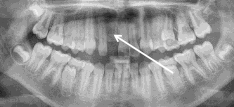AUTOTRANSPLANTATION
An adult tooth (or molar) can be missing because it has been lost due to dental problems or an accident affecting the tooth or surrounding area. However, this is usually because one or more of those teeth were never generated by the body; this occurs in 5% of people.


